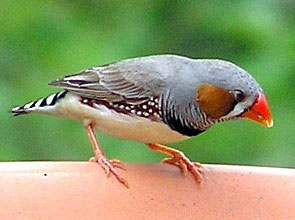I wish you all a Happy New Year and hope we all can get out from under the thumb of the covid virus. Paraphrasing Spock: “Be well and prosper!”
Gary and Ted both recommend this article on tornado weather in a warming climate. [link]
From National Geographic: The 12 most intriguing animal discoveries of 2021; From ants that can regrow their brains to the world’s tiniest reptile. [link]
 |
| Zebra Finch The original uploader was Nv8200p at English Wikipedia. Attribution, via Wikimedia Commons |
Gary Crider says this article is fascinating! While still in the egg, Zebra Finch chicks alter the way their mitochondria work in response to their parents calls. [link]
David Miller recommends this broader perspective on Covid from Nicolas Christakis, Prof of Social and Natural Sciences at Yale. [link]
This piece, from Nature, tells, in detail, the story of how mRNA vaccines were developed. (The covid vaccines are mRNA based). [link]
The winter solstice is noticed by honey bees. Learn more at honeybeesuite.com: [link]
Can animals understand magic tricks? The New Scientist has an article about European Jays that can be fooled and what that tells us about their mental processes. [link]
Ted LaMontagne liked this article about a fossilized dinosaur embryo still in the egg shell. (From the Washington Post): [link]
This article in the New Scientist discusses the problems in understanding how the ancestors of New World Monkeys could have traveled from Africa to the New World. [link]
A history of European mistletoes. [link]



